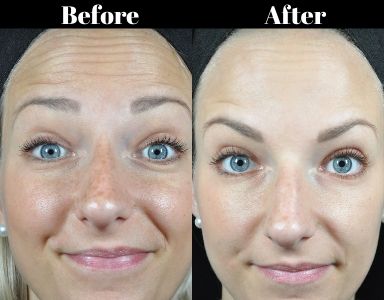Baby Botox – What is it?
‘Baby Botox’ is one of the many ‘tweakments’ gaining popularity with young people by the year. Some claim the trend is rocketing thanks to unflattering zoom angles, while others argue the speedy recovery is what attracts busy millennials. But what does this new procedure tell us about aging, marketing and the expectations placed on young women in 2022?
Botox, of course, is nothing new. Also known as Botulinum Toxin, Botox is a neurotoxic protein that temporarily inhibits nerve signals. Botox was first used cosmetically in 1989, and has been injected into the facial muscles of women and men across the world since.
The popularity of regular Botox has also been the treatment’s downfall. With so many clients wanting to smooth smile lines, cover crow’s feet and fade frown wrinkles, unskilled injectors came to meet the demand. The result? A pervasive image problem, with expressionless, frozen and swollen horror story photos jumping to mind for most of the general public. For many a bodged Botox job is a karmic result. The cruel jokes aimed at overly Botoxed celebrities that litter tabloids and twitter alike paints a singular picture – that a dodgy result is a fair, if ironic, punishment for excessive vanity.

Baby Botox is the new alternative – allegedly. Clinics use the term to describe a reduced dose, which can mean anything from halving the manufacturer’s recommended dose to quartering it. While there is no definitive medical definition, what is clear is the intention of the procedure. Baby Botox is advertised as the less risky, more natural approach to cosmetic surgery.
Ultimately, the only real difference is semantic. Baby Botox is marketing jargon lacking practical meaning. In offering a ‘smaller’ dose (whatever that may mean), clinics offer the social benefits of looking young without the stigma attached to full-on Botox.
The unique marketing of Baby Botox includes its target market – women as young as their early twenties. Because Botox prevents muscle movement, the treatment is being promoted as a way prevent wrinkles even forming in the first place.
Despite being defined as a ‘tweakment’ (a hashtag friendly and catch-all name for non-invasive cosmetic procedures), Baby Botox can be far from low-maintenance. Because the effects of Botox are temporary, young women are effectively signing up for a life time of injections if they want to see those results.

Clearly, the marketing has worked. The term is currently being googled over twice as frequently than in 2016, and searching ‘Baby Botox’ on TikTok returns videos with views in their millions that vlog the ‘Botox journey’ of countless twenty-somethings.
A 2018 report found that there were nearly a quarter million more cosmetic procedures performed that year, and highlighted a new spike in minimally-invasive procedures. Of these, the most popular was Botox.
While the short term effects of Botox have been shown to be fairly harmless, the long term side effects are, at best unresearched and at worst, have shown to engender fatal consequences. Besides the physical, what are the psychological implications of the new way it is marketed?
While the term ‘Baby Botox’ is primarily a marketing ploy aimed to aid regular Botox’s image problem, the targeting of younger and younger women by the cosmetic industry feels like a callous attempt to grow the market. The implication that physical aging is undesirable is now not only forced upon women when they develop wrinkles but is prematurely imposed as a fear for young women too.
Additionally, its popularity speaks to double bind faced by women in choosing a cosmetic procedure. While regular Botox comes with a stigma of vanity, aging comes with similar stigma in the world of influencers and social media models. Baby Botox seems to allow the best of both world- or rather, it offers an escape from the worst of both.
Ultimately, Baby Botox is the newest incarnation of the oldest beast in the story book. It presents a choice for women between sacrificing the emotive face that makes them human, and forgoing being treated as a human in a society that sees aging women as invisible.
Words by Kate Bowie





















